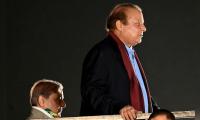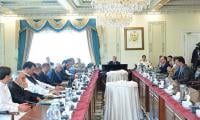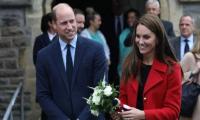HONG KONG: China threatened retaliation against Washington on Thursday after US President Donald Trump signed legislation supporting Hong Kong pro-democracy protesters, just as the world’s top two economies edge towards a trade truce.
Activists in the crisis-hit city hailed the move, saying it would help them pile pressure on Beijing-backed local authorities, and staged a “Thanksgiving” rally saluting Trump and US lawmakers.
Trump signed the legislation under heavy pressure from Congress, where it attracted rare bipartisan support, and in a statement spoke of his “respect” for Chinese President Xi Jinping, calling for both sides to “amicably settle their differences”.
But Beijing lashed out furiously, summoning the US ambassador, threatening unspecified “firm countermeasures” and warning Washington not to implement the legislation. “The nature of this is extremely abominable, and harbours absolutely sinister intentions,“ the Chinese foreign ministry said in a statement.
“China strongly urges the US side to correct mistakes and change course,” the ministry added later. In Hong Kong, the government expressed “extreme regret” after Trump signed the legislation requiring an annual review of freedoms in Hong Kong and banning the sale of crowd control equipment.
“The two acts are obviously interfering in Hong Kong’s internal affairs,” the city government said in a statement, warning the move would “send the wrong message to the protesters”.
Hong Kong police enter ransacked campus after protest siege: Hong Kong police on Thursday entered a ransacked university campus where authorities faced off for days with barricaded pro-democracy protesters, gathering a huge haul of petrol bombs and other dangerous materials left over from the occupation.
The Hong Kong Polytechnic University became the epicentre of the territory’s increasingly violent protest movement when clashes broke out on November 17 between police and protesters armed with bows and arrows as well as Molotov cocktails.
The standoff settled into a tense stalemate during which hundreds fled the campus — some making daring escapes, others caught and beaten by officers during failed breakouts — leaving a dwindling core of holdouts surrounded by police cordons. But in recent days, the last few people barricaded in the campus seemed to disappear. University staff said they were only able to find a single protester on campus and reporters there struggled to see any major presence in the last 48 hours. Late Wednesday, a lone masked man spoke to journalists inside the campus and said that some 20 protesters remained.
But there was no sign of them on Thursday morning when police and firefighters moved in, 11 days after the siege began, for what was billed as an operation to secure dangerous objects now littering the once placid campus and to collect evidence. During the November 17 battle, the sheer volume of petrol bombs thrown by protesters succeeded in stopping police officers and crowd control vehicles from breaking through the barricades, forcing the stalemate that led to the siege.
Throughout Thursday riot police in tactical gear began gathering hundreds of discarded petrol bombs and bottles of chemicals that had been looted from the university laboratories as well as archery bows and a makeshift catapult.
Explosives experts went from room to room followed by a gaggle of reporters, passing walls daubed with graffiti insulting the city’s police force and calling for greater freedoms under Chinese rule.
Harvey Weinstein. — AFP FileNEW YORK: Harvey Weinstein’s 2020 conviction for sexual assault and rape was...
Liberal Justice Elena Kagan on Sept. 13, 2016. — Slate website WASHINGTON: U.S. Supreme Court justices, wading back...
A representational image of inmates behind jail bars. — Unsplash/FileMOSCOW: A Russian court on Wednesday ordered...
Sudanese soldiers guard the surrounding area of the UNMIS compound in El-Fasher, the administrative capital of North...
US quietly shipped ATACMS missiles to Ukraine. — Report news agencyWASHINGTON: The United States in recent weeks...
US President Joe Biden during his address in California. — AFP FileWASHINGTON: President Joe Biden signed a...







